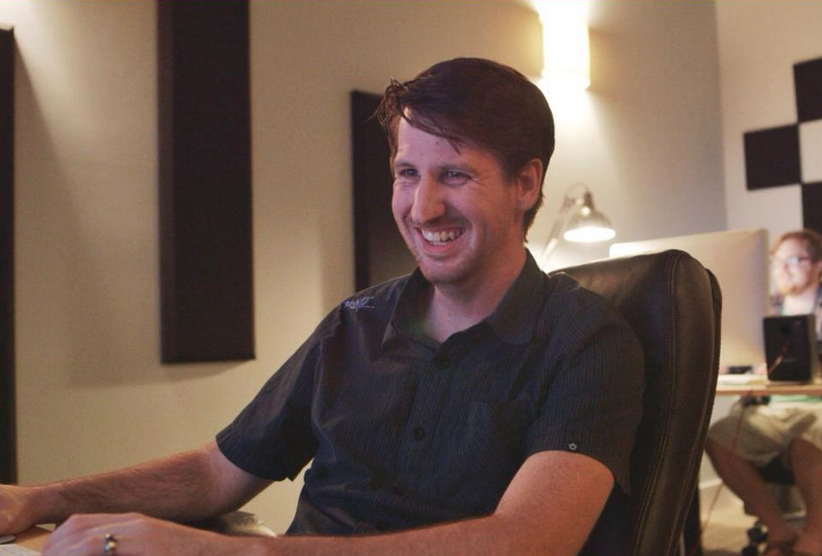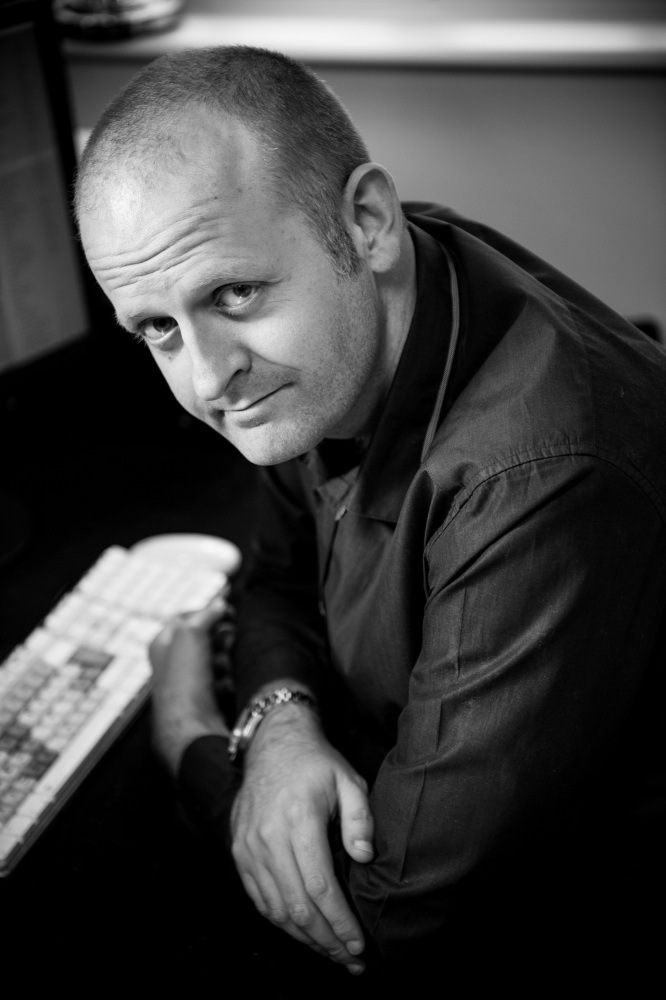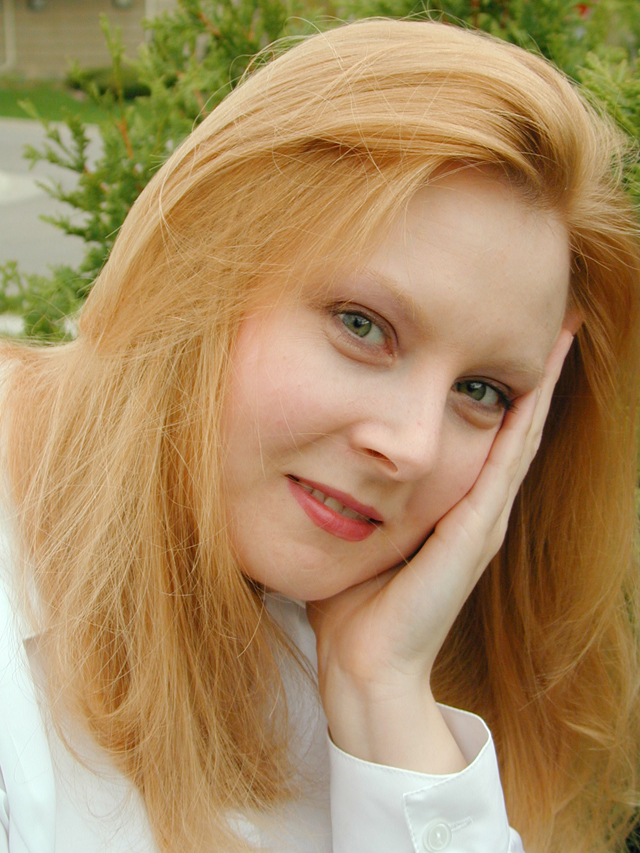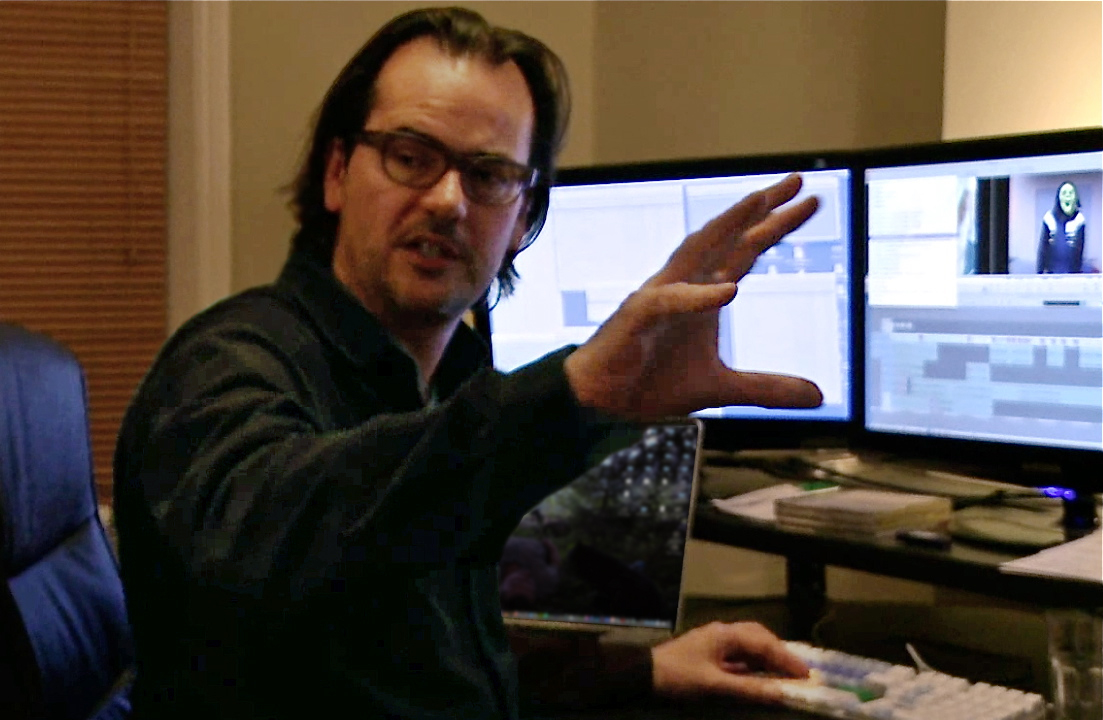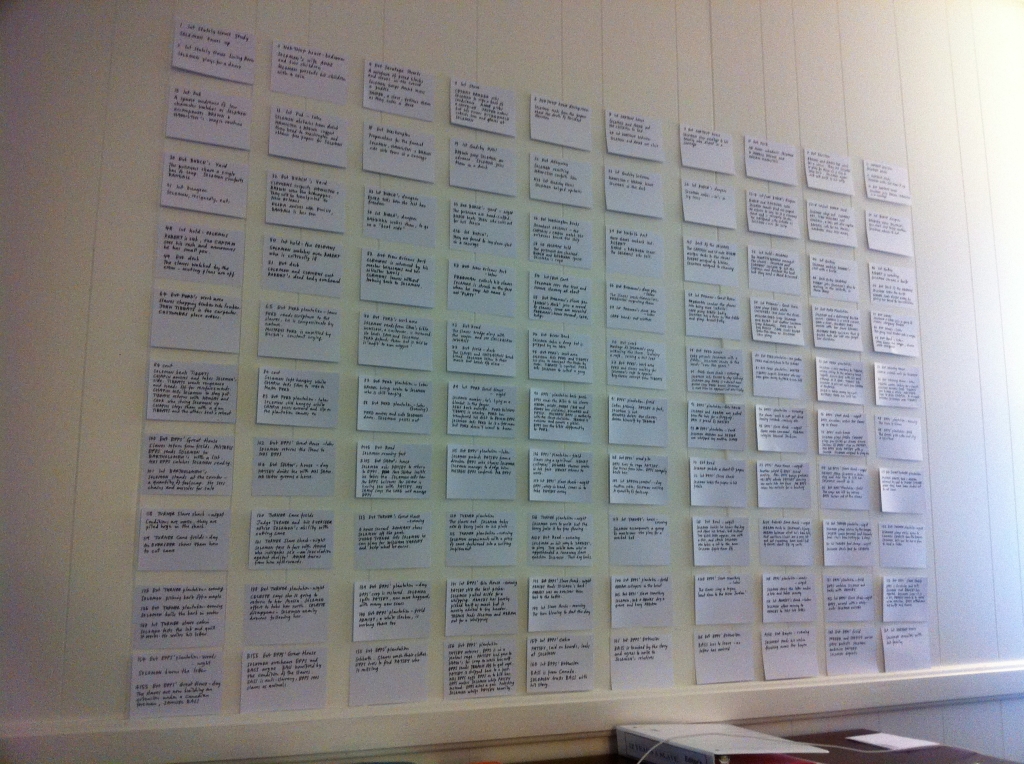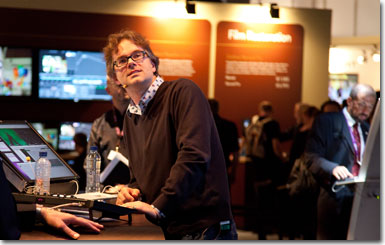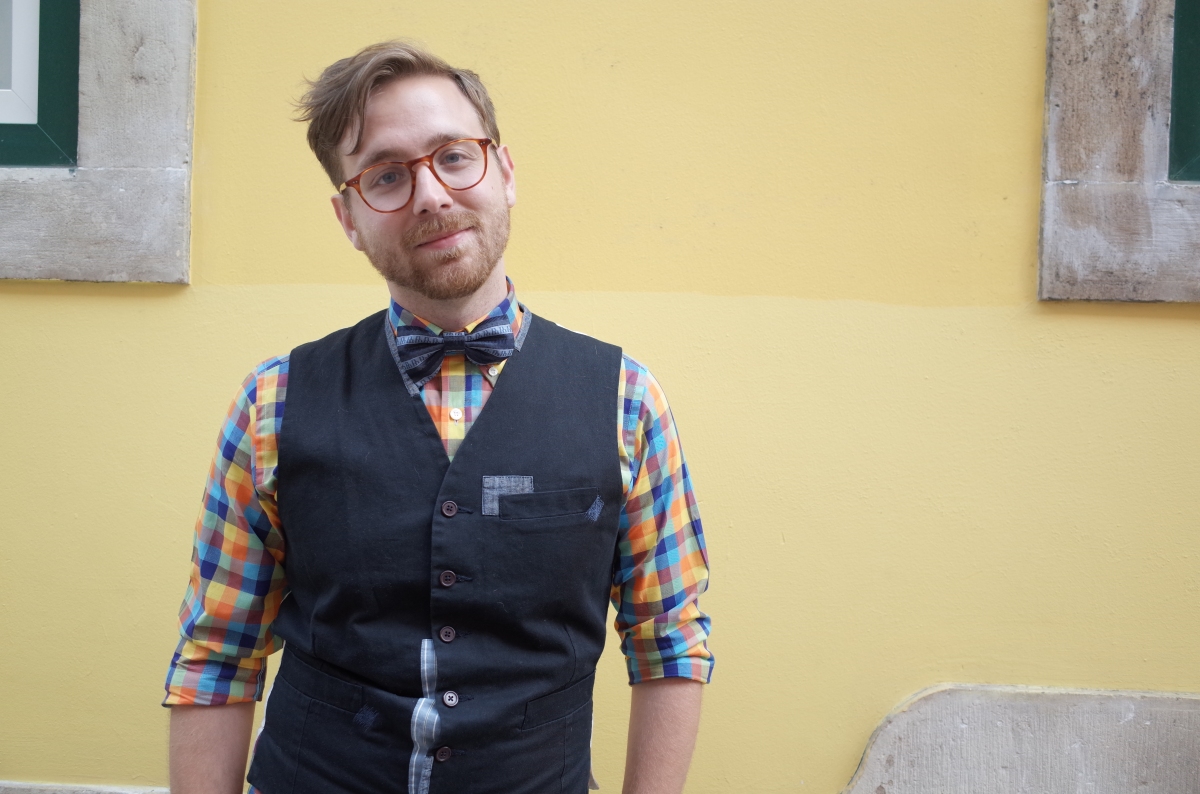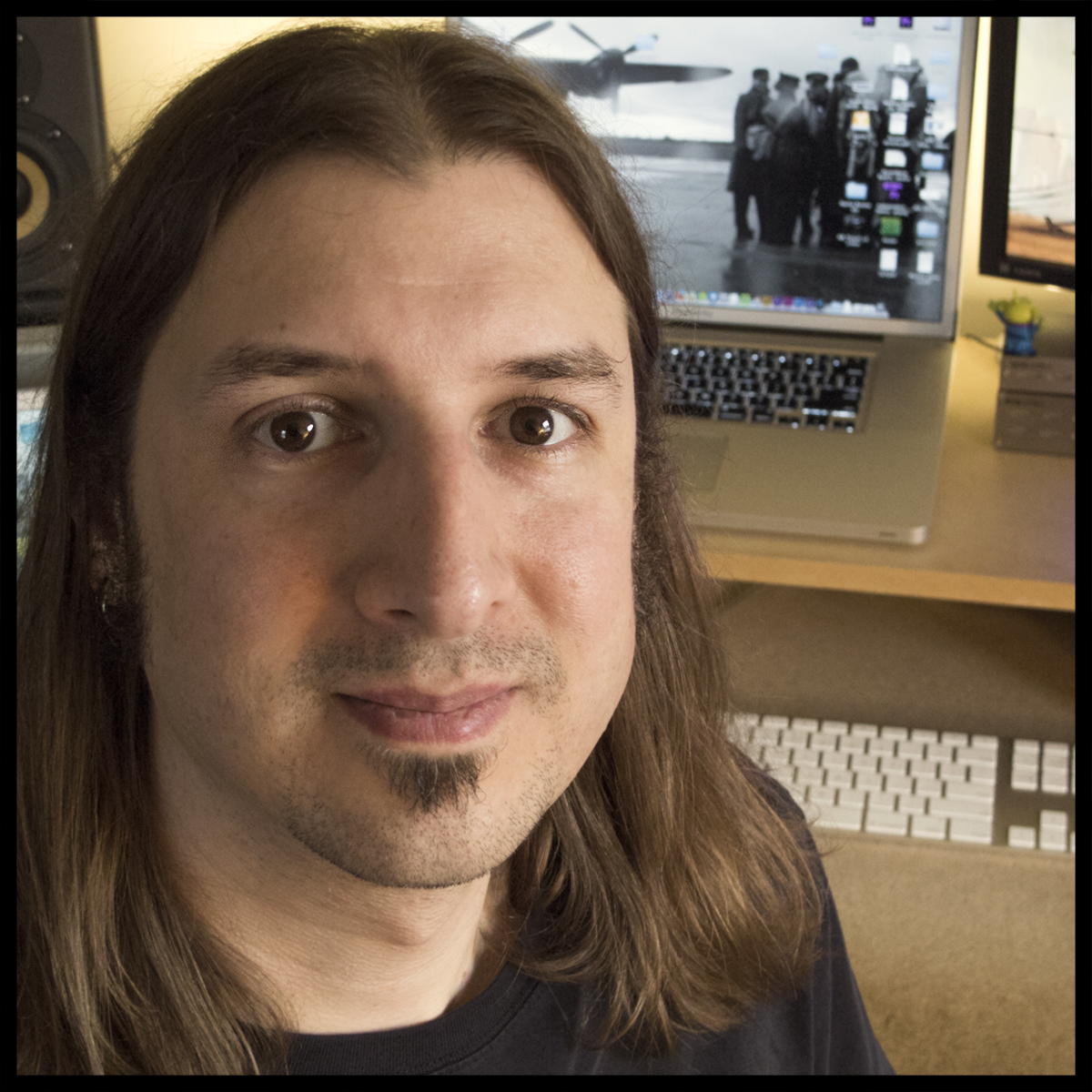Kenny Miracle has worked in media full-time for 10 years, focusing mostly on video editing and motion graphics. His work has mostly consisted of reality/documentary-style projects for non-profits, with a bunch of commercials and a few live concerts thrown in the mix. He co-edited an award-winning documentary about sex trafficking called Nefarious: Merchant of Souls, and is currently working on another documentary. When not holed up in an editing cave, you’ll find him playing with his wife & daughters or watching super hero movies.
What got you interested in editing?
I first wanted to learn editing in high school when my dream was to do animation, and a broadcast class involving video editing was the closest option available in my small Missouri city. I enjoyed it from the beginning and have made post-production my focus since then.
How did you get started in editing?
I attended a filmmaking internship for three years at another small town – only in Texas this time – called the Center for Creative Media. They produced a variety of work, but mostly short docs, promos, and music videos. I did a lot of assistant editor work there, which included very little sleep and a lot of mistakes. It was a great place to learn where I couldn’t get fired. Plus, I met my wife there. So two thumbs up!
After completing the internship, I sought an entry-level video editor position and landed at the International House of Prayer in Kansas City. A non-profit like that was perfect for me as it allowed flexibility to grow and provided consistent work. After about a year, there was an unexpected shift in personnel and I found myself as an interim post production manager. Only a year into my first real media job, this was intimidating. I applied everything I had learned as an assistant editor, and found the skills cross over quite well. This was a time of getting to be involved in the entire creative process of videos and learning on-the-job with great people. I also found that I enjoy leading a small team of editors. Overall, it was a foundational experience with fond memories.
In 2011, I had a baby and began freelancing full-time, but it was more difficult than I expected to be creative and manage a business and be a first-time father all at the same time. So I soon took a lead editor position on an independent documentary, which I am still working on.
What is your preferred NLE(s) of choice? Why?
My current NLE of choice is Adobe Premiere Pro, but I’ll use whichever NLE works best for the project. I learned Avid at school, then Final Cut Pro 6/7 on the job, then Premiere through Lynda.com. Lately, I’ve really liked the hover scrub feature in Premiere, because I deal with a lot of b-roll and it speeds up browsing time.
Give us a run through of your editing process
The process changes depending on the type of project. For now, I’ll share on the non-technical, big picture workflow I use for docs. Each step has lots of mini-steps I won’t delve into here.
1) Talk to the director about his/her vision and if they already have a storyline in mind or not.
2) Go through all of the relevant footage. If there a lot of interviews, then I like using transcripts.
3) For interviews or vérité footage, I will organize sound-bites and clips based on topics, characters, themes, etc. For b-roll or stock footage, I use a digital asset manager to meta-tag the mess out of it.
4) Assembly Cut – For me, this is a compilation of everything the director and I think has the potential to make the cut. This will usually be driven by sound-bites and text slates. It’s often quite long, but gives a good feel for all the good content. I’ll review with any decision-makers involved.
5) Rough Cut – There is usually a lot of overlap between assembly and rough cut, but this is essentially when the story begins to take shape in a more cohesive way with b-roll, temp music and graphics. Lots of reviewing and recutting.
6) Fine Cut – Finalize edits and graphics. Get initial score for timing and emotion. Do whatever it takes to reach picture lock.
7) Send to color and post audio. If possible, I like to remain in the creative process.
8) Deliver in whatever formats are needed. I prefer to outsource this stage if budget allows.
What tips were you given that has been really helpful?
For story: People care about people more than a product or cause. Craft stories that are both intellectually clear and emotionally gripping.
For work ethic: Never stop learning, and be able to learn when no one is there to teach you. Be faithful with small things or you won’t be trusted with big things.
For editing: Be organized. No one taught me this clearly, but I learned it the hard way by making many mistakes strictly due to lack of organization.
How organized are you?
I am the most organized editor I have ever worked with so far. Some times to a fault because it takes so much time. Either way, I love this quote I just saw on Twitter from a CEO named A. R. Bernard, “The unorganized are always at the mercy of the organized.”
Can you work without a script, finding the story and building it on your own?
I hardly know any other way to work. That’s one reason documentaries are appealing. I love finding the story in the edit.
What is your favorite film? Favorite TV show?
I never know how to answer this, because I feel like it’s always changing. For fiction films, I liked Big Fish, Batman Begins, Finding Nemo, LOTR. Basically, any fantastical film with very human themes.
For non-fiction films, I’ll mention The Cove, because it was the doc that showed me docs can be emotionally compelling, yet still carry a strong message. This year, I really liked We Steal Secrets: The Story of WikiLeaks.
For TV shows, BBC’s Sherlock, Planet Earth, 24, Avatar: The Last Airbender, Legend of Korra, and Band of Brothers.
What style of editing have you done? (Narrative/Documentary/News/Corporate/Wedding/Etc)
Documentary, promos, live event/concert, corporate, and a wedding. The only narrative was a short film in high school, but I don’t think that counts…
If you could meet any editor, who & why?
I don’t know many editors by name. I would mainly like to meet other feature doc editors to see how they approach their work. For how much talk there is about docs being shaped in editing, I don’t find very many interviews with the editors.
What advice can you offer to get through complex edits?
This is difficult to answer. It really depends on the situation. So here’s something generic: Try lots of options. Show them to different people that you trust. Step away from the complexity for a couple days if you need a mental refresh.
Which plug-in(s) do you find most useful? Why?
I have used Red Giant’s Magic Bullet Looks and Colorista 2 the most because of how they bring color grading right into the NLE.
How does the director-editor relationship work for you?
This relationship is incredibly important both to have a smooth post experience and to create a great film. The director and editor should be aligned in vision, goals, and – at a certain level – values. My preference is for the creative process to be highly collaborative with the director.
I always liked the analogy of an armor bearer. The editor is there to serve the director and find ways to take their vision to the next level. I try to have a disposition to always say yes to requests, but without becoming a yes-man. I’ll speak up if I have an idea or see a potential hole in the direction we’re going.
Since the director is usually looking at the big picture and balancing more things than the editor, I feel like editors can add value by really diving into the nuances of the footage to find unexpected gold nuggets.
I am also often thinking about how a first-time viewer will receive the video. For example, there have been times where a director and I have crafted a scene that we thought was emotionally compelling, but when we showed it to an audience they didn’t feel the same way. This wasn’t because it was a bad scene, but because we left out a bit of expository information that gave context. It is usually information that we already understood very well, yet the audience was getting for the first time. So I find there is always some balance between following the director’s vision, adding my own creative ideas, and ensuring the viewing experience makes sense to the audience.
How do you deal with problem clients/directors?
Most problems I have had were due to lack of communication – often from both of us. It seems miscommunication is part of the human experience and can’t fully be avoided. If it’s my fault, then I try to own up to it and come up with a solution to the issue. If the miscommunication is more on their side or just something beyond both of us, then I still take it upon myself to help with a solution. Bigger problems arise when the other isn’t willing to be flexible in fixing the issue that has come up, or when they continue to communicate poorly. When this is the case, I try to choose joy, finish the project as best possible, and move on.
What’s your overall philosophy about editing?
For editing, it comes down to focusing on story and striving for excellence in everything. However, this is talked about a lot. So I’ll share some other personal thoughts regarding the creative process in general.
I believe that all creative endeavors at some level are an expression of the people doing the creating. Because of this, motives are very important to me. A question I often ask myself is: “Why am I doing this?” The focus of this question is more on my motives than on whatever it is I am working on. I want my answer to be free of selfish ambition or desire for recognition (It isn’t always, by the way). Ideally, I want to create things that will help shift people’s views about the world or themselves, and motivate them into loving action.
As a Christian, my relationship with God is also integral to my work. I really resonate with the Biblical idea of God wanting to partner with people to do his work. A big part of that is sharing his messages with people. Story is one way to carry a message, and I want my small efforts in media to be a part of God’s big message, whether clearly or thematically.
Name one thing that you would tell an aspiring editor
Don’t get discouraged by the small, mundane work and give up before giving yourself a chance.
Follow Kenny on twitter @kpmiracle
